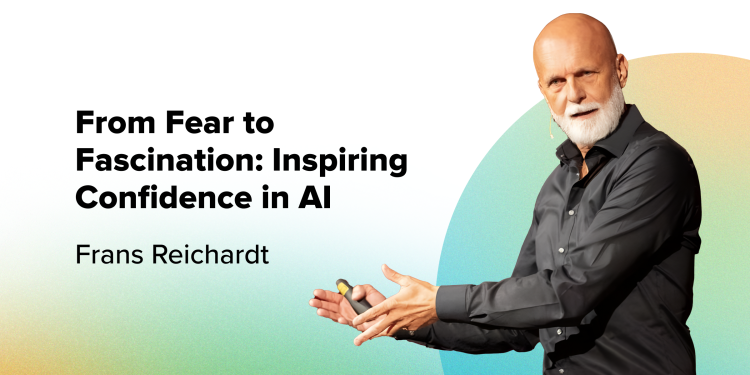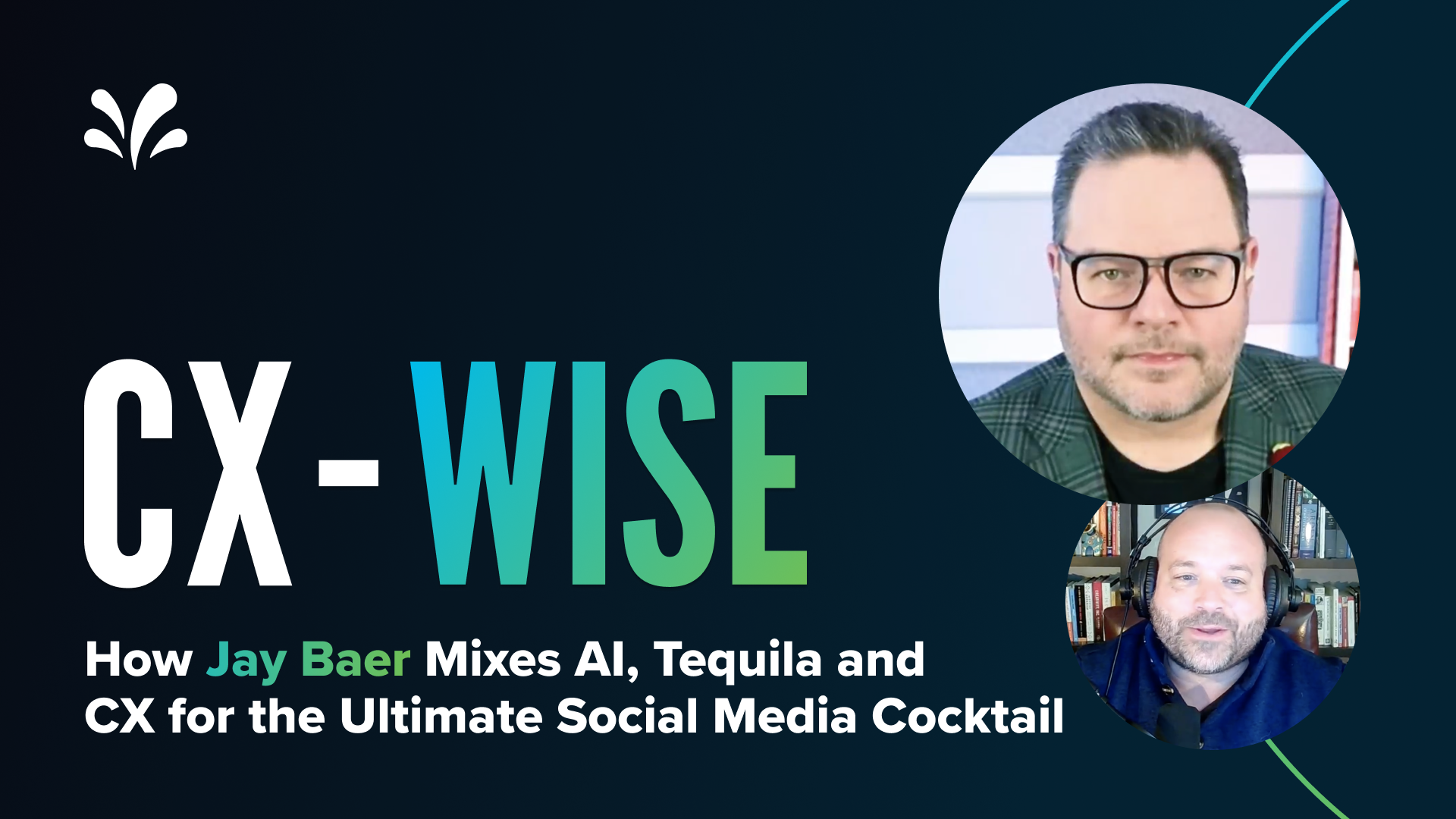In this article, CX thought leader Frans Reichardt delves into the reasons behind AI skepticism, including fear of the unknown, change, and losing relevance. The article suggests understanding these fears and showcasing AI's fun aspects, daily-life applications, and benefits in customer service to address this skepticism. It emphasizes embracing AI's potential and adapting to its advancements.
“Ho! No! Wait!” My client interrupts me during an in-company workshop for an international group of professionals in Belgium. What triggers her prompt response is my suggestion to use a tool like ChatGPT to find ideas that might be useful to craft stories around the creations that can be made with the bakery ingredients this company manufactures.
Reliable and verifiable sources of information
In a stern tone, my client emphasizes tools such as ChatGPT should NOT be used by anyone in the company. The argument she used for this is that the information that employees will find through artificial intelligence (AI) is not verifiable. The only reliable and verifiable sources of information that employees can use are the company website and information from internal experts. Period.
Resistance to artificial intelligence
I instantly knew this wasn't the right time to start a discussion about how an AI tool like ChatGPT can be valuable for this company and its employees. This topic is a no-go area. It is also clear that this will probably be my first and last assignment for this international client.
At the same time, it was not the first time I encountered resistance to AI in general and ChatGPT in particular. Never have I witnessed such a strong skepticism of AI and a strict decree being issued on the spot.
How to deal with AI skepticism in your organization
In this article, I will show you how to deal with AI skepticism in your organization.
First, let us look at some causes of skepticism about AI. When it comes down to it, it all has to do with fear.
Fear of the unknown - In general, skepticism, resistance or rejection of any new technological development is caused by the fundamental fear of the unknown.
Not that we should blindly follow any new technological development. But you will do yourself and the people around you a favor if you are open-minded towards such new developments and at least try to understand what it is about, how it is used and how it can be applied in the future.
Fear of change - Over millions of years, people learned to hide in their caves or in huts in the woods to stay safe from the dangers outside. It has become part of our nature to stay where we are to keep safe and survive. That's why so many people are afraid of change. Change means uncertainty.
Uncertainty means danger. Therefore, you should be careful when promising people AI will change their lives. It will, this message will rather scare them than attract them. Start by showing them the fun and the benefits. Please read on for some good examples.
Fear of losing relevance - People are also skeptical of using AI because they fear losing relevance, losing control, and losing their jobs. They are worried that AI will automate tasks or that AI will be able to do things people cannot do or cannot do as well or fast as AI can. Which certainly will. They are afraid AI will make them redundant. Instead of putting effort into ensuring they keep adding value, they try to keep the new kid on the block away.
Understand fears and acknowledge them
To overcome skepticism about AI within your organization or your team, it is essential to understand and acknowledge these fears. Understanding these fears and the people who have them will help you help them understand what AI can do.
There are three ways to overcome AI skepticism and help AI skeptics to jump aboard.
1. Show them how AI can be fun
The first way to overcome skepticism about AI is to start by showing the fun part of it. There are loads of AI applications that will even convince skeptics that AI can be fun.
Take them to Dall-e-3 or Midjourney and let them create realistic images and art from a description in natural language. Take them to ElevenLabs.io and show them how it transforms any text into a highly realistic voice in 29 languages and can even clone your voice.
Take them to Stable Diffusion and generate photorealistic imagery, paintings, and emoji from text. Show them how Suno and Stable Audio helps them generate music, speech, and sound effects from text.
Take them to Runway.ai and show them how to generate videos using text, images, or both.
Take them to Heygen.com to effortlessly produce studio-quality videos with AI-generated avatars and voices. I bet they will love it.
Take them to DeepDream and create stunning, unique and visually stunning art, photos, and videos in seconds.
Take them to AlphaGo and invite them to play the board game Go at a superhuman level, and AI Dungeon, an AI-generated text adventure game, showcases the fun and creativity AI can bring to gaming. AI-powered games challenge players in new ways, provide dynamic and adaptive gameplay, and offer unique storytelling experiences that keep players entertained and engaged.
Finally, take them to Replika and Mitsuku and let them engage in entertaining human-like conversations with these AI-powered chatbots developed to discuss various topics, tell jokes, play games, and even offer emotional support. Interacting with these chatbots can be a fun and engaging experience for users looking for entertainment and companionship and for skeptics getting to know AI better.
Some of these AI tools are far from perfect yet, but we know one thing for sure: like most technologies we have seen in the past, AI will get better along the way.
2. Show the present use of AI in our daily lives
The second way to overcome skepticism of AI is to show what this technology already means in our daily lives. Many are aware that AI is already a part of our daily lives. To mention a few:
Personalized Recommendations - AI algorithms are used on a large scale by companies like Amazon, Netflix, and Spotify to provide personalized recommendations for products, movies, and music. These platforms help customers discover new items they are likely to enjoy based on their preferences and past interactions. Facebook uses AI for content moderation, facial recognition, and personalized advertising. It employs AI algorithms to analyze user behavior, preferences, and interactions to deliver targeted content and ads.
Virtual Assistants - Virtual assistants like Siri, Google Assistant, and Alexa use AI technology to understand and respond to voice commands. They can set reminders, answer questions, and control your smart home devices, making your daily routines more convenient and efficient. According to Grand View Research, the global AI-powered virtual assistant market is expected to grow at a compound annual growth rate of 24.3% from 2023 to 2030.
Online Customer Support – Many companies use AI-powered chatbots to provide 24/7 customer support on their websites. These chatbots can answer common customer queries, provide product information, and even assist in troubleshooting issues. AI-powered chatbots help businesses reduce response times, help customer service agents increase the number of first-time fixes and improve customer satisfaction.
Those skeptical about AI will no doubt recognize some of the applications mentioned and may not have previously been aware that they already benefit from it.
3. Show them the power of AI in customer service
The third way to overcome skepticism about AI is to show its power in customer service.
Chatbots for Instant Support - AI-powered chatbots are widely used in customer service to provide instant support to users. Chatbots can efficiently handle common customer queries, provide information about products or services, and offer personalized recommendations. They can operate 24/7, ensuring customers receive assistance and information anytime, improving response times and customer satisfaction.
Personalized Customer Interactions - AI algorithms enable companies to analyze customer data and behavior to personalize customer interactions. AI-powered systems can segment customers based on their preferences, purchase history, and browsing behavior to deliver targeted and relevant messages. This personalization enhances the customer experience, increases engagement, and improves the likelihood of conversion and retention.
Sentiment Analysis for Feedback - AI technologies like sentiment analysis can analyze customer feedback, reviews, and social media interactions to gauge customer sentiment and satisfaction levels. By automatically analyzing text data, AI can identify trends, patterns, and sentiments in customer feedback, allowing businesses to quickly respond to issues, address concerns, and improve overall customer experience. Sentiment analysis enables companies to proactively manage customer relationships and make data-driven decisions to enhance customer service.
As customers have increasingly high expectations, contact centers are seeing their workload increase. At the same time, they face challenges in finding and retaining staff. If you're looking for ways to improve efficiency and customer experience, AI will likely provide you with the solutions you're looking for. Involve everyone in your organization in discovering solutions that improve customer service and contribute to customer satisfaction.
Neither you nor I can predict the future of AI. AI is developing with the speed of light, and the examples of AI applications mentioned in this article may be outdated before it is even published. One thing certain: AI is here to stay, and it already brings so many possibilities and benefits that there is no time to lose. Get on the bus now and enjoy the ride!





